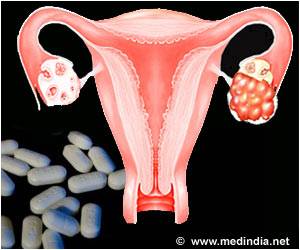
‘Tumor-associated macrophages (TAMs) play important role in cancer progression.
’
Read More..Tweet it Now
Together with research colleagues from France and the UK, they have published a study conducted in mice showing that it appears to be possible to hinder the spread of ovarian cancer and reduce the tumor by removing some specific immune cells, known as macrophages, from the fat that is stored in the abdominal cavity and hanging in front of the intestines. The omental fat, as it is known, became well-known a few years ago under the name ’skinny fat.’ However, it should not be confused with the layer of fat seen in overweight people as visible rolls of fat under the skin.Read More..
Anders Etzerodt is a Ph.D. and assistant professor of cancer immunology at the Department of Biomedicine at Aarhus University. He is the lead author of the study, which has been published in the Journal of Experimental Medicine. He explains that ovarian cancer most often occurs in the fallopian tubes and that the starting point for the research project was familiar knowledge about cancer cells from this type of cancer being able to detach and shed into the abdominal cavity. Because this occurs very early in the course of the disease, the ’homeless’ cancer cells need to fasten onto something to survive.
"This is where the omental fat becomes a kind of host for cells which would otherwise perish, and our research now shows that when tumor cells move into the omental fat, two specific types of immune cells known as macrophages alter character. They develop into the disease’s small supporters," says Anders Etzerodt.
"One of the macrophage types, which is already present in the tissue, simply begins to help the tumor spread further to the other organs in the abdominal cavity. At the same time, the second type of macrophage, which comes from the bloodstream and is recruited as a reaction to the infiltration of tumor cells into the omental fat, begins to counteract the immune system’s attempt to fight the invasive cancer cells. In this way, they help the tumor to grow larger," says Anders Etzerodt about the new findings.
In the study, the researchers initially experimented with removing the macrophages already found in the tissue, which led them to establish that this inhibited the spread of cancer in the abdominal cavity - through without the tumor in the omental fat becoming smaller. When the researchers simultaneously removed the above-mentioned macrophages from the bloodstream, the result was both less spreading and a shrinking tumor.
Advertisement
"What we’re doing is also immunotherapy, but it focuses on another part of the immune system. This project is only the third scientific article to describe how macrophages with different origins affect tumor development, and precisely how the macrophages that are found to inhibit the immune system’s ability to hamper cancer can be removed. They ’put the brakes on the brake,’ if you will," he explains.
Advertisement
According to Anders Etzerodt, the research result has obvious potential for improved treatment in the future, though with the important proviso that the testing has only been conducted on mice so far. The next step is to develop a medicine that can be tested on people. According to Anders Etzerodt, this is particularly interesting because the research group has previously shown that similar macrophages from the bloodstream are also present in models for skin cancer.
"So far, we’ve gained a new and deeper understanding of what is helping and what is hindering the body in the development of ovarian cancer, and I’m looking forward to testing this in clinical trials on patients who currently have a really poor prognosis," he says.
Source-Eurekalert














